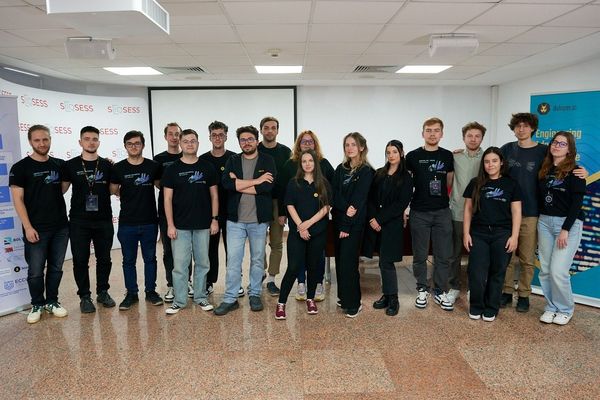Private Cloud Infrastructure

Project Overview
- In a rapidly advancing world of technology, Dvloper team collaborated with one of our customers to build a modern, private cloud to drive their hosting needs. Our goal was to build a robust, flexible, and scalable platform capable of meeting the most demanding requirements of our client. Behind this ambitious project stood a dedicated team of specialists in infrastructure and applications, working together to ensure a successful implementation.
- From the very beginning, we established two distinct teams, each playing a crucial role in the project's success:
- The Infrastructure as a Service (IaaS) team was responsible for laying the solid foundations of the platform, working with modern hardware, installing and configuring storage virtualization and security systems, and ensuring the necessary interconnectivity.
- The Platform as a Service (PaaS) team focused on developing an automated system for deploying virtualized environments optimized for hosting Kubernetes clusters. Our two teams worked closely together to guarantee seamless integration between the hardware and software components of the infrastructure.
Hardware and Storage Implementation
- Building the hardware platform was a complex but well-structured process. Together with the customer, we opted for modern servers for their reliability and high performance, creating a centralized storage system based on Ceph, which is a powerful, open-source storage platform designed for high availability, scalability, and resilience.
- Ceph Advantages:
- Distributes data across multiple nodes, eliminating single points of failure.
- Provides object, block, and file storage within a unified system, allowing flexibility and efficiency.
- Scalability ensures easy addition of new storage nodes without service disruption, offering a future-proof storage solution.
- Self-healing and self-managing capabilities reduce operational overhead, allowing the team to focus on further optimization rather than constant maintenance.
Software and Automation Integration
- With Ceph as the backbone of our storage architecture, we were able to seamlessly integrate it with OpenStack, another critical component of our infrastructure.
- Key Benefits of OpenStack Integration:
- Facilitated efficient resource management, improved data distribution, and ensured smooth scalability as demand increased.
- Deployment using Ansible automation was a critical milestone, enabling resource allocation automation and providing flexibility for dynamic workloads.
- By leveraging Ceph’s robust storage capabilities, our OpenStack environment could efficiently handle high-volume workloads while maintaining data integrity and performance.
- Ceph Storage in OpenStack:
- Used as a backend for OpenStack's block storage (Cinder) and image storage (Glance), ensuring seamless and efficient data flow across the platform.
- Enabled the infrastructure to handle demanding workloads while maintaining low latency and high performance.
- OpenStack’s modular architecture allowed us to customize the platform to meet specific requirements, ensuring alignment with the project’s broader infrastructure goals.
Testing and Validation
- To ensure a smooth transition into production, we began with a dedicated laboratory environment, where components were tested and validated before moving to the production environment.
- Testing Approach:
- Allowed early identification and resolution of potential issues before they impacted the main infrastructure.
- Simultaneously, the application team developed automation solutions that enabled rapid and efficient deployment of virtual environments, significantly reducing the time needed to deliver new services.
- Conducted multiple test scenarios, including performance tests, to ensure that the infrastructure could withstand various operational challenges.
Production Rollout and Maturity Stage
- A turning point in the project was reaching the maturity stage of the infrastructure, at which point our customer started onboarding the first solutions to the production environment.
- Real-World Testing & Refinements:
- Served as a test of the platform’s capabilities, proving stability and ability to handle real workloads.
- The client immediately benefited from the high performance and flexibility of the new environment.
- Feedback received helped us further refine the configurations.
- Through continuous monitoring and adjustments, we ensured an uninterrupted experience and a high level of security.
Challenges and Solutions
- Throughout the project, we encountered various challenges, ranging from hardware compatibility issues to the complexity of automation processes.
- Problem-Solving Strategies:
- Every obstacle provided an opportunity for learning and improvement.
- Regular brainstorming workshops, troubleshooting sessions, and technical meetings helped identify the most effective solutions.
- The strong collaboration between teams was instrumental in the project’s ultimate success.
Project Completion and Future Plans
- After a year of intense work, our infrastructure project reached its conclusion, marking a significant transformation in the way we manage IT resources.
- Future Growth and Expansion:
- This infrastructure was designed to be scalable, allowing it to grow alongside user needs.
- The automation processes we implemented enable us to integrate new technologies and adapt the platform to future demands.
- Future plans include expanding existing capacities, implementing more security solutions, and optimizing performance based on evolving market needs.
Conclusion
- This project was both a major challenge and a great success for our teams.
- Through collaboration, expertise, and innovation, we have built a modern infrastructure ready for the future.
- Moving forward, we remain focused on continuous optimization and exploring new opportunities.
- With each new phase of development, we ensure that our infrastructure remains at the forefront of technological standards, delivering the best possible services to its users.




